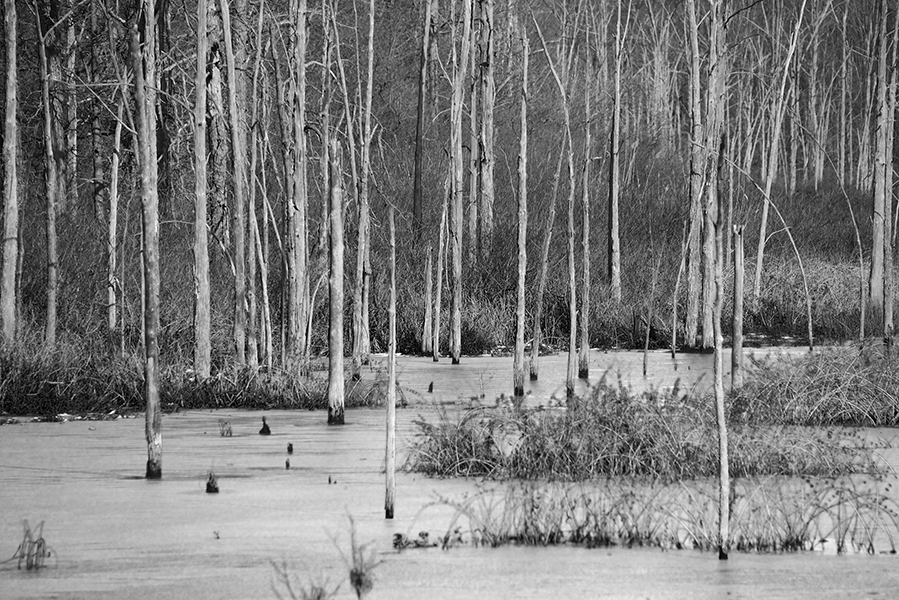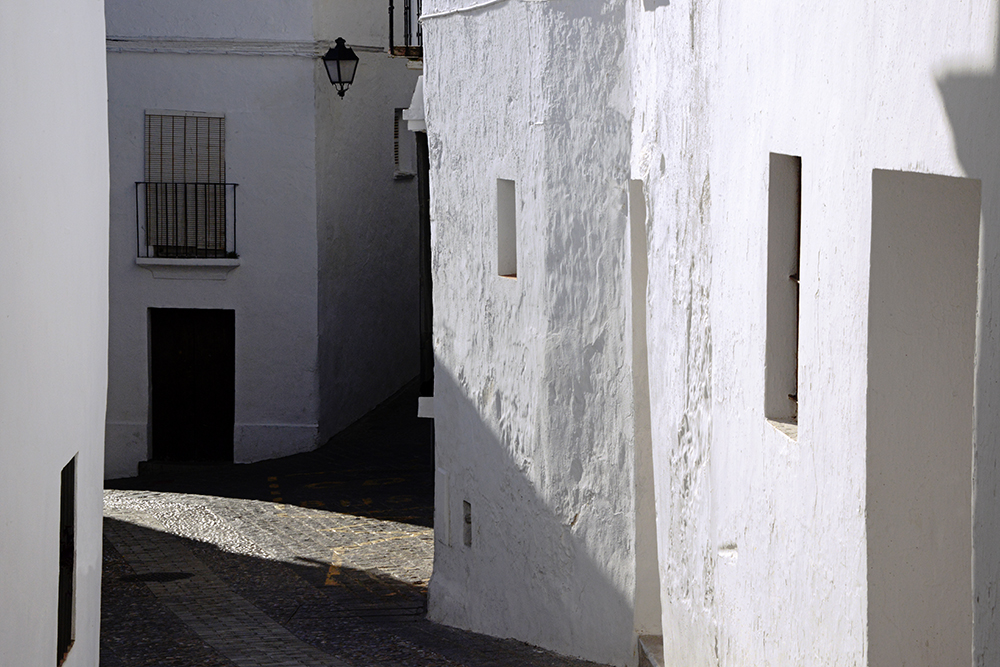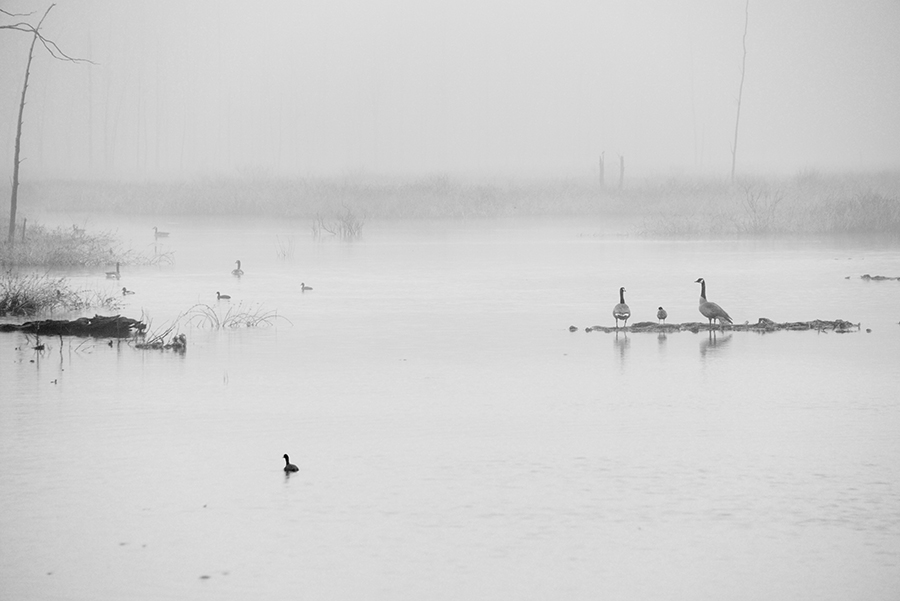
Silent New Year
Not a sound at the marsh today (January 1st, 2017). Hundreds of acres covered with a thin sheet of ice, perforated only by tiny islands of marsh grass and dead pin oaks. The few remaining geese and ducks have moved to the open water of lakes and rivers. Not a sound, not even “the sweep of easy wind …”.
Groves of dead oak still stand in silence after more than fifty years, gray with age but unaffected otherwise. Today’s blue sky and early afternoon light accentuated the bleached wood and made for a dramatic black and white image close to shore.
The blanket of snow last year (see “Sentries” https://stillpoint-gallery.com) contrasts with this first landscape of 2017 – ineffable beauty waiting for us in the starkness of the season.
“Solitude gives birth to the original in us – to beauty unfamiliar and perilous … to poetry.” Thomas Mann







